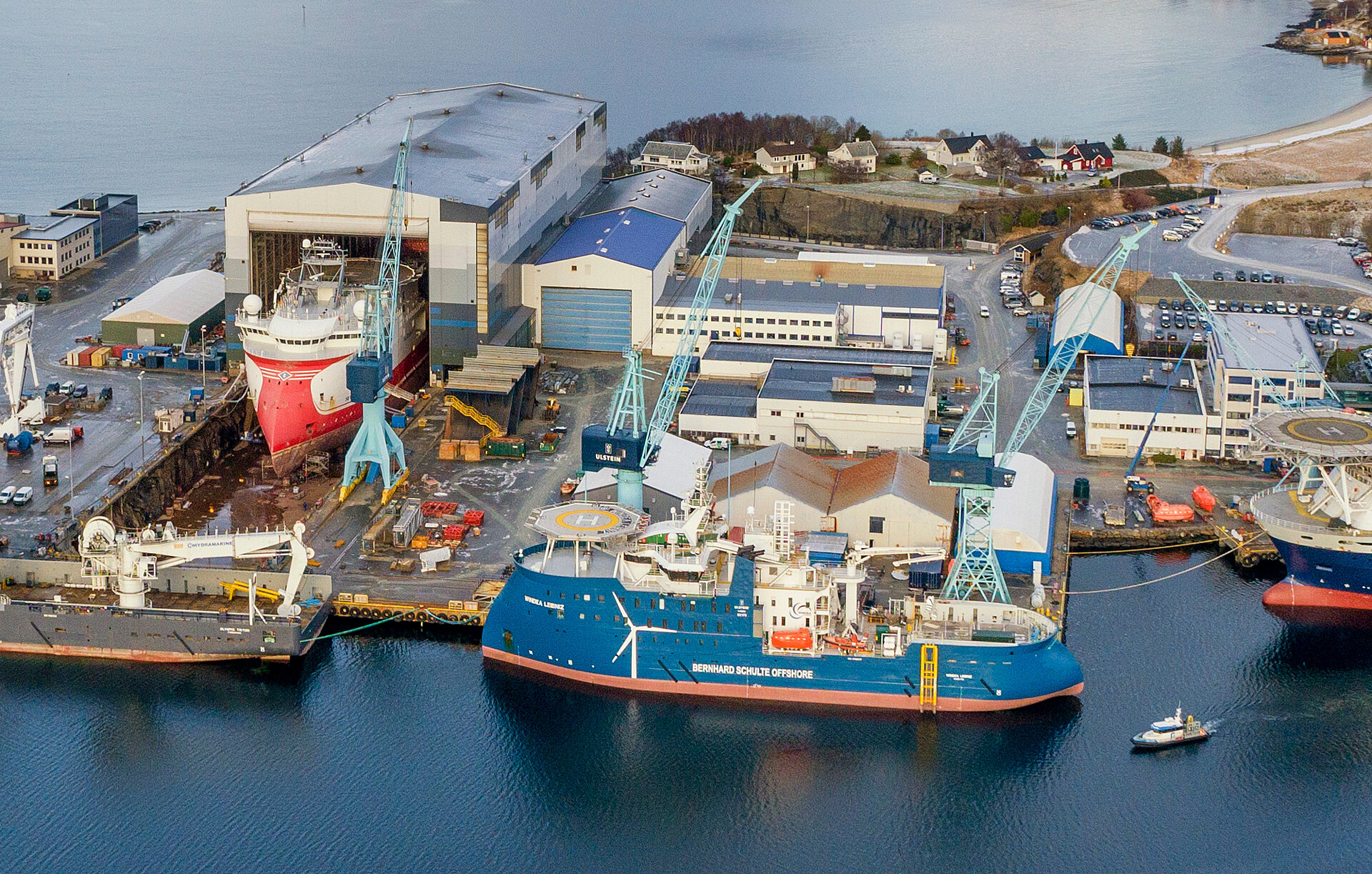
Windea Leibniz upgrade completed

The Windea Leibniz is back in service after an extensive upgrade at the shipyard in Norway (Foto: Per Eide Studio)
The offshore wind support ship Windea Leibniz has returned to service for Bernhard Schulte Group following an extensive upgrade at Ulstein Verft. The modifications enable a broader range of vessel operations in the future, transforming the ship, also partly owned by ICBC Leasing, from a service operation vessel (SOV) to a commissioning service operation vessel (CSOV).
Work has included a 50% increase in accommodation for offshore wind engineering personnel and ship’s crew. A height-adjustable pedastal for the motion-compensated gangway has been installed, allowing more flexibility in the North Sea. And a new pedastal at the stern has been fitted for wind farms in the Baltic Sea which are generally at lower heights above sea level.
Captain of the Windea Leibniz, which was built in 2017 at Ulstein Verft, Rainer Mueller, commented: “With the two new pedestals, we are more flexible when approaching the service platforms for the wind turbines. There is no uniform standard for the height of the platforms in North Sea wind farms. After the yard stay, we can now vary with the height of our gangway.
“With the Baltic pedestal at stern, we can easily switch our gangway from the North Sea height to the lower Baltic Sea height, which makes us even more flexible when working in different wind farm regions. The new cabins allow us to accommodate more technicians on board. All this really makes Windea Leibniz the new 'it-girl' on the CSOV market,” he added.
Matthias Mueller, managing director of Bernard Schulte Offshore, said: “Offshore wind is an essential part for the success and the transformation of the energy sector towards sustainable and green solutions. The upgrade makes Windea Leibniz even more attractive for the market.”
The project has finished at a key moment in Europe’s offshore wind market. Governments have declared new targets on renewable energy expansion, notably for wind power in the Baltic and North Seas. Germany, for example, now has a target of doubling offshore wind capacity by 2030, equivalent to an expansion of 30GW by that time.
